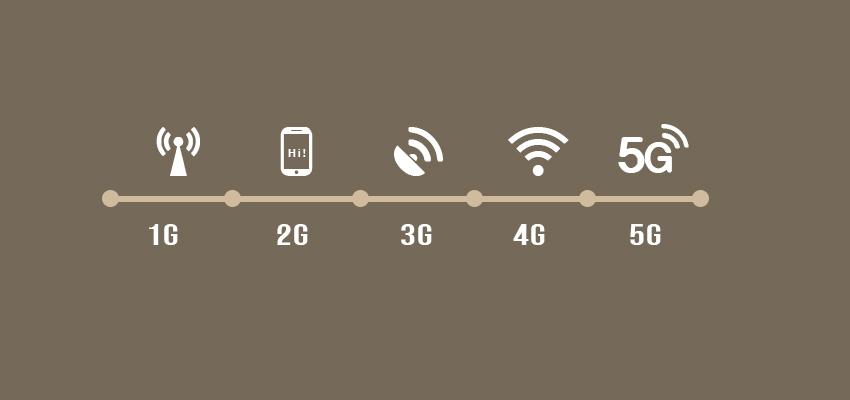
The Difference of 1G, 2G, 3G, 4G, & 5G Network Connection
Posted May 6, 2020, 8:21 a.m. by Emil S.The characters 1G, 2G, 3G, 4G, and 5G refers to the wireless technology being used on your cell phone. "G" means "generation." When you connect to the Internet on your smartphone, you may notice that the strength of your signal can be shown in these values next to your signal bar. 1G is the first generation of this technology, and 5G is the latest.
A new wireless telecommunications technology is being released every 10 years. Each generation has different features and speeds - a definite step up from the generation released before them. Read on to know the difference between each generation.
1G: A voice-only Telecommunication Technology.
The 1G technology was launched during the early 1980s. 1G is developed by Telecom (now known as Telstra). This is a voice-only telecommunication technology. As mentioned earlier, it is the first generation of mobile telecommunication technology. It has a maximum speed of 2.4 bps. Think of analog phones back in the day that only supports voice calls.
Cell phones that run on 1G analog technology had little security and low battery life. Back then, the voice quality was not that good. Dropped calls often happen during communication.
2.5G and 2.75G: Data Services - SMS, MMS,
and Picture Messages.
2G is the technology that turned cellphones from analog communications to digital communications. This upgrade first happened in 1991 in Finland by Radiolinja and was done on GSM networks.
The update aims to establish a more secure and reliable channel to communicate. This was achieved by letting multiple users use a single channel through multiplexing. 2G technology introduced data services such as SMS, MMS, and picture messages. This technology also made encryption possible for calls and text, giving you more security.
With the use of General Packet Radio Service (GPRS), the maximum speed of 2G technology is 50 kbps. For GSM Evolution (EDGE) with enhanced data rates is 1 Mbps.
Later on, 2.5G and 2.75G technologies were developed that made data transmission feasible. 2.5G brought about the development of a new packet-switching method that was more effective than 2G technology. The 2.75G technology provided more speed to 2G technology.
The technologies 2.5G and 2.75G mostly served as marketing assets to promote cell phones and new features to the public. AT&T was the first GSM network that supported 2.75G with EDGE in the USA.
3G: Higher Data and Voice Capacity.
3G technology was introduced during the early 2000s. This generation is what sets the standards for the wireless technology that we have now. With 3G, you get to share pictures, download videos, check your emails and browse the Internet on your smartphone.
The goals for 3G was to deliver higher data and voice capacity, be able to support more applications, and improve data transmissions – all for a low cost. The upgrades included faster transmission speeds, which gave way for improvements in getting access to mobile data and video calling.
With the mobile Internet now possible, "mobile broadband" was introduced. The maximum speed for 3G is around 384 kbps in moving devices and 2 Mbps for non-moving devices.
4G: Current Standard
4G technology was launched in 2008. It is the current standard that we have in today's smartphones.
The aim of developing 4G was to provide a higher level of speed, quality, security, and capacity to smartphone users while also lowering the cost of data and voice services, Internet, and multimedia services.
With 4G technology, smartphones are now able to support gaming services, 3D TV, HD TV streaming, video conferencing, cloud computing, and faster mobile web access. This is made possible with Multiple Input Multiple Output (MIMO) and Orthogonal Frequency Division Multiplexing (OFDM) technologies.
The maximum speed that you can get with 4G is 1Gbps for non-moving devices and 100 Mbps for moving devices.
5G: The Future - Overall Higher Performance.
5G is the latest generation when it comes to mobile telecommunications technology. The 5G network is more reliable, has multi-Gbps data speeds, increased availability, massive network capacity, and overall higher performance.
It is a relatively new technology, so it has not been widely implemented yet in the market. The available 5G devices are probably the latest smartphone models. The expected speed from 5G connections can be up to 20 Gbps.
Now that you know what 1G, 2G, 3G, 4G, and 5G means and what they can provide, this knowledge can help you select the best smartphone for your needs.
